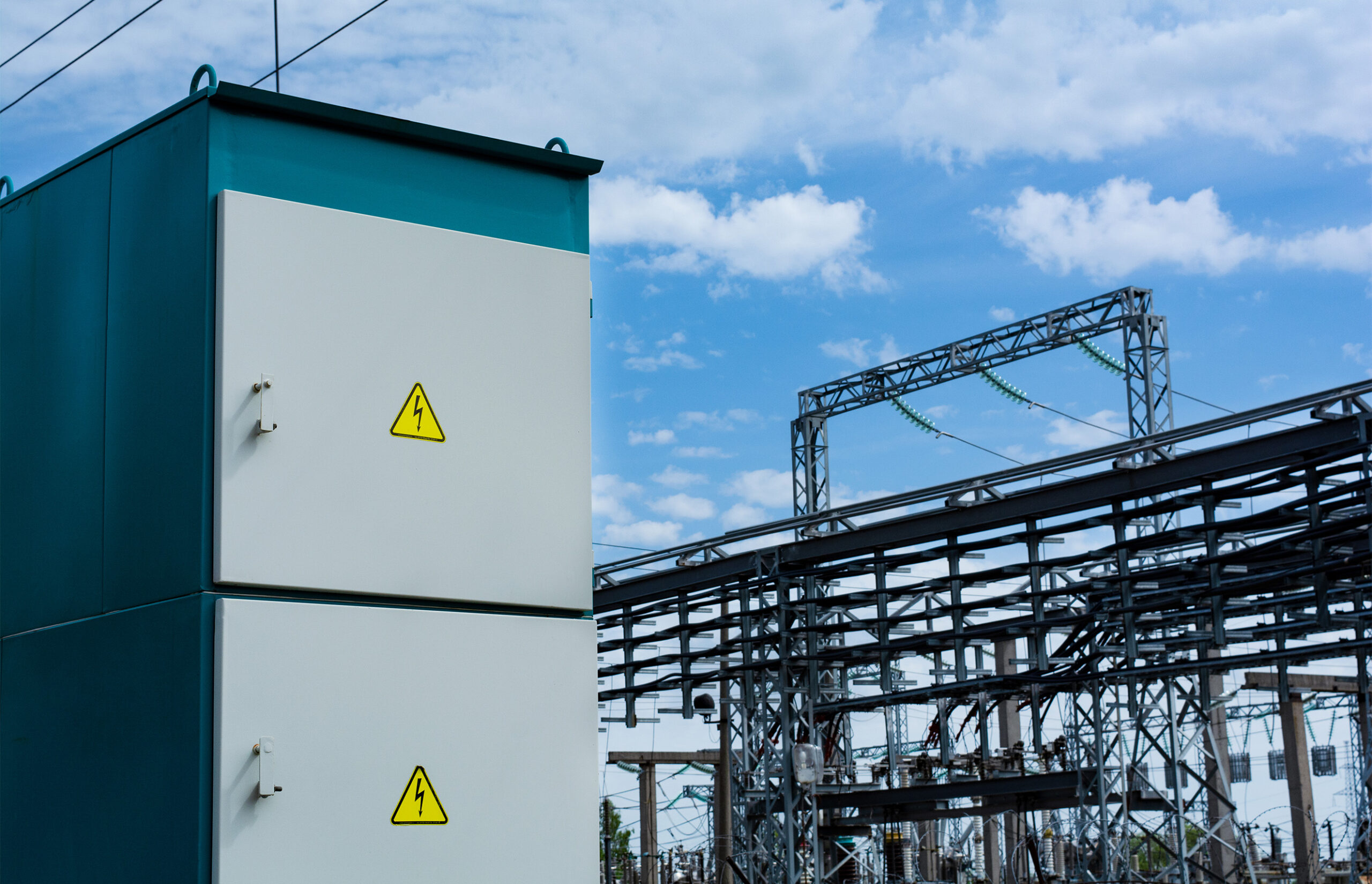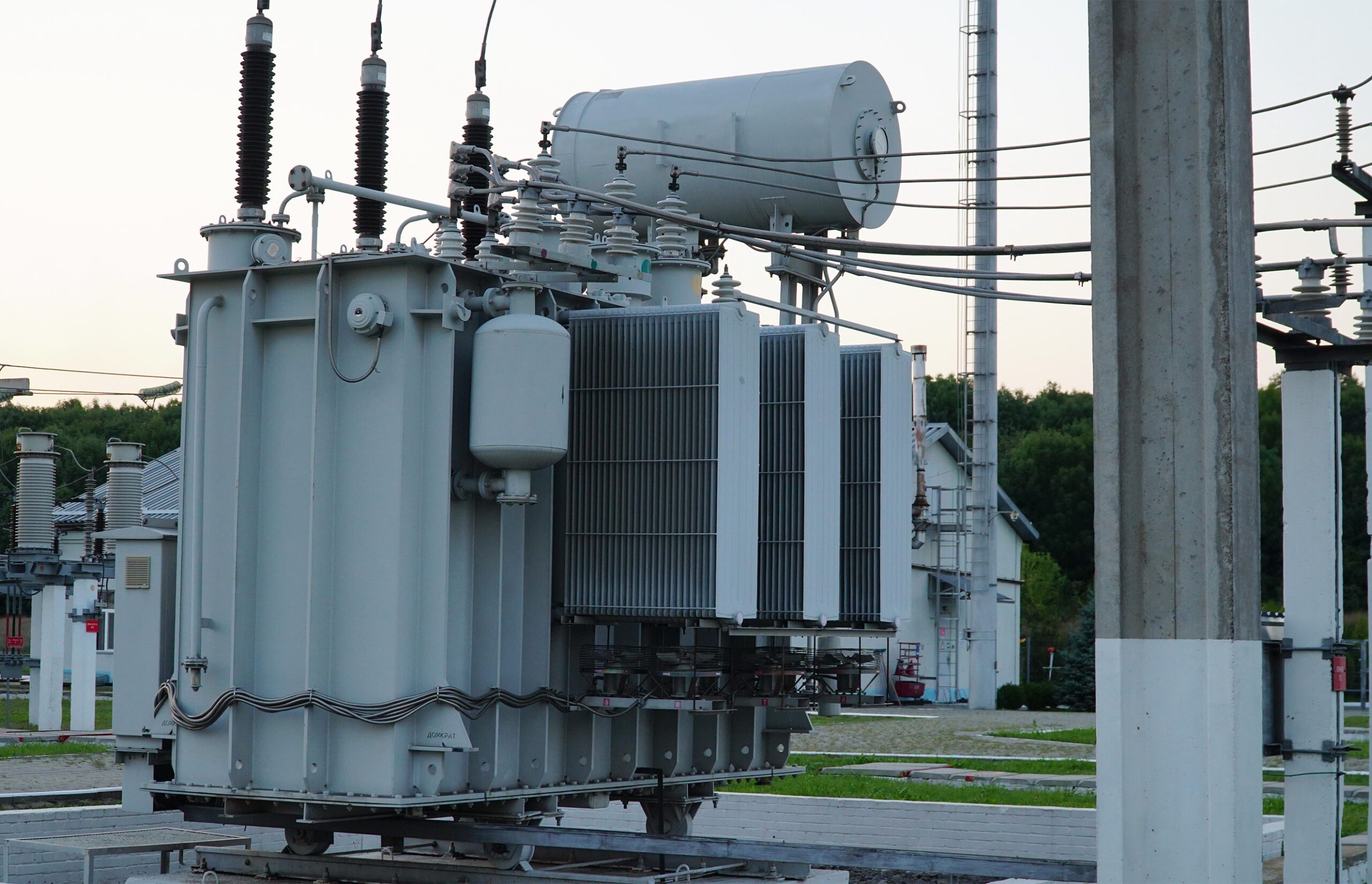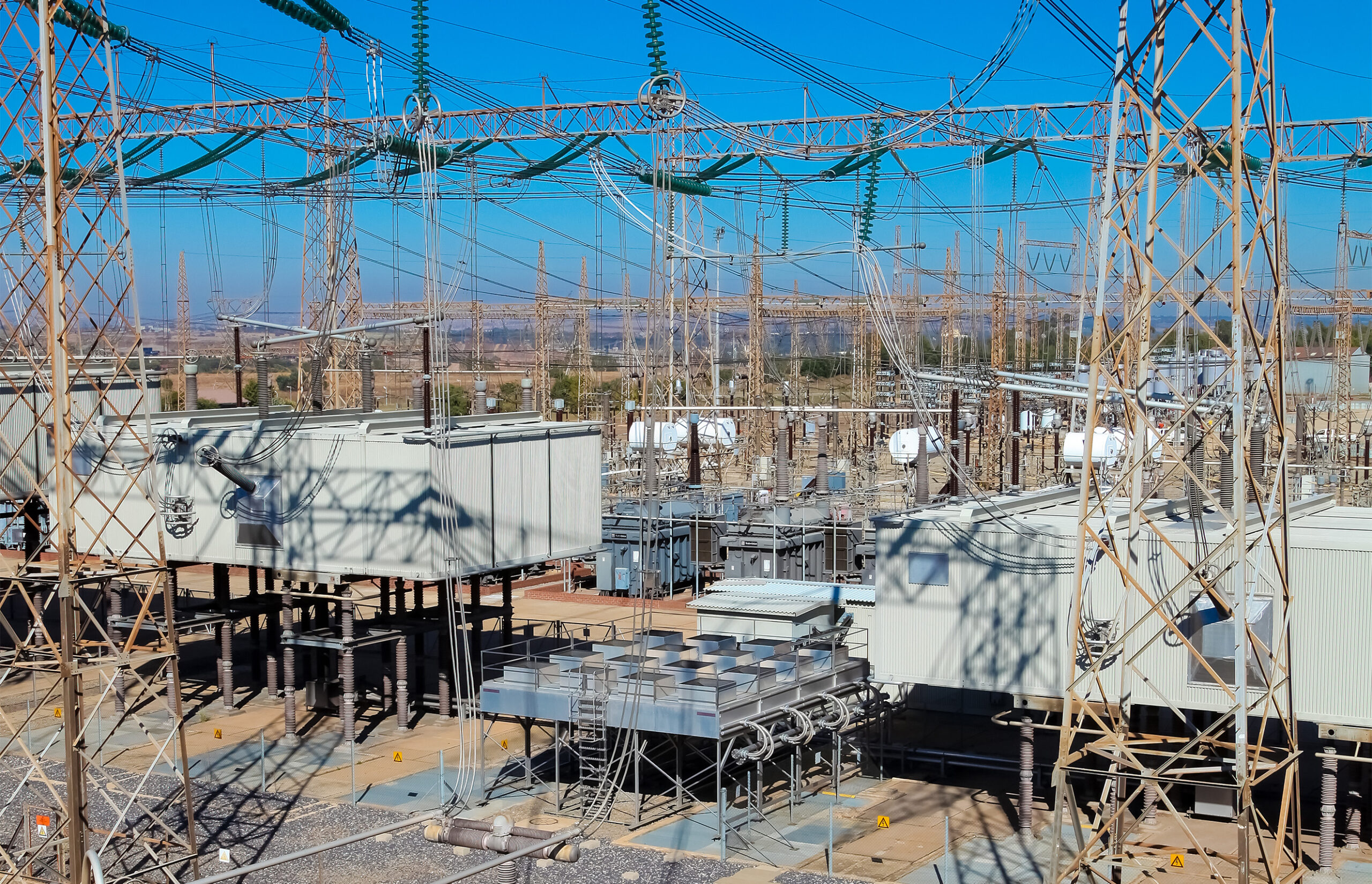Understanding Transformer Aging and Life Expectancy
What Determines a Transformer’s Lifespan?
A transformer’s lifespan is primarily determined by the health and durability of its insulation system and its operating conditions over time. While the standard life expectancy for a transformer is 20 to 30 years, several factors can either shorten or extend its operational life:
- Insulation Quality: Solid insulation, typically made of cellulose, is critical to a transformer’s longevity. Its degradation directly impacts the transformer’s performance and life span.
- Oil Quality: The dielectric oil in liquid-filled transformers insulates and cools the system. Over time, contaminants like moisture, oxygen, and overheating can degrade the oil, accelerating aging.
- Load Conditions: Operating a transformer at or above its rated capacity can cause thermal stress, overheating, and premature failure.
- Environmental Factors: Humidity, temperature extremes, pollutants, and even altitude can impact transformer aging by affecting cooling and insulation systems.
- Maintenance Practices: Proactive maintenance, including oil testing, filtration, and temperature monitoring, plays a crucial role in preserving transformer health and extending its lifespan.
By managing these factors, operators can ensure transformers remain reliable and functional for decades.
The Role of Insulation in Transformer Aging
The solid insulation system in a transformer, usually composed of cellulose-based paper, is a critical factor in determining its lifespan. Insulation failure is often the primary cause of transformer aging because:
- Dielectric Breakdown: Over time, thermal and electrical stresses degrade the insulation, reducing its ability to protect against voltage surges and short circuits.
- Moisture and Oxygen: Moisture from oil contamination or external ingress accelerates chemical reactions in the insulation, leading to degradation. Oxygen further compounds this issue by causing oxidative aging of both the oil and paper.
- Thermal Aging: Heat causes the insulation to lose its tensile strength. Studies show that at an operating temperature of 6°C below the rated hot-spot temperature, the insulation’s life expectancy is doubled.
Preventative Measures:
- Regular oil testing to monitor moisture, oxygen, and other contaminants.
- Use of sealed-style tanks and silica gel breathers to minimize moisture ingress.
- Upgrading to vegetable-based insulating oils like FR3, which slow down insulation aging compared to traditional mineral oils.
Well-maintained insulation ensures a transformer can exceed its standard lifespan and remain operational for 30 to 40+ years.
How Temperature and Overloading Accelerate Aging
Excessive temperature and overloading are two of the most common causes of transformer aging. A transformer generates heat during operation, but when its load exceeds rated capacity, the following occurs:
- Overheating: Overloads create higher electrical losses, which result in excessive heat. This heat accelerates the breakdown of both the insulating oil and the solid insulation, reducing the transformer’s lifespan.
- Thermal Stress: Repeated thermal cycles from abrupt load swings cause mechanical stresses in the transformer’s windings, weakening the insulation and increasing the risk of failure.
Mitigation Strategies:
- Real-Time Monitoring: Install temperature sensors and load management systems to track heat and load conditions.
- Load Balancing: Avoid continuous overloading by redistributing loads or upgrading to a higher-capacity transformer.
- Cooling System Maintenance: Ensure the cooling system is functioning optimally to dissipate heat effectively.
Environmental Factors That Impact Transformer Longevity
Transformers are often exposed to a range of environmental conditions that can significantly impact their lifespan. These conditions include:
- Humidity and Moisture: High humidity can lead to moisture ingress into the transformer, particularly in unsealed units. Moisture degrades the insulating oil and solid insulation, increasing the risk of dielectric breakdown.
- Ambient Temperatures: Extreme heat accelerates the aging of insulation materials and reduces the efficiency of the cooling system, while extreme cold can cause thermal contraction, stressing the transformer’s components.
- Dust and Pollutants: Dust, salt spray, and industrial pollutants can settle on transformer surfaces, obstruct cooling mechanisms, and promote corrosion, particularly in coastal or industrial areas.
- Altitude: At higher altitudes, reduced air density impairs heat dissipation, causing transformers to operate at higher temperatures.
- External Debris and Wildlife: Overgrown vegetation, animal intrusion, or foreign objects can obstruct radiators, damage components, and increase the risk of short circuits.
Preventative Measures:
- Install protective enclosures and conservator tanks for transformers operating in harsh environments.
- Use breathers and sealed tanks to minimize moisture and contamination risks.
- Regularly clean and inspect the transformer’s external surfaces to ensure optimal cooling and performance.
By mitigating environmental stressors, transformers can maintain efficient operations and avoid premature aging.
The Importance of Oil Quality and Moisture Control
The quality of the insulating oil in a transformer is vital to its longevity, as the oil serves two critical functions: insulation and cooling. Over time, the oil’s performance can degrade due to:
- Moisture Contamination: Moisture is the most common contaminant, accelerating insulation paper aging and reducing dielectric properties.
- Oxidation: Exposure to oxygen causes the oil to degrade, forming acids and sludge that harm the insulation and clog the cooling system.
- Overheating: Excessive temperatures accelerate chemical reactions, reducing the oil’s insulating properties.
Preventative Measures:
- Conduct regular oil testing (Dissolved Gas Analysis – DGA) to monitor moisture levels, oxygen content, and oil health.
- Use silica gel breathers or sealed tanks to prevent moisture ingress.
- Implement oil filtration or perform oil changes based on test results to restore oil quality.
- Consider upgrading from mineral oil to vegetable-based oils like FR3, which degrade more slowly, have a higher fire point which reduces fire risks, and improve the lifespan of insulation.
Proper oil management ensures transformers remain insulated, cool, and protected, significantly extending their working life.
Maintenance Strategies to Extend Transformer Life
Proactive maintenance is essential to preserving transformer health and maximizing its lifespan. Key strategies include:
- Routine Inspections: Regularly check for oil leaks, damaged seals, overheating signs, and corrosion. Visual inspections help catch small issues before they escalate.
- Oil Testing and Filtration: Conduct regular DGA and moisture analysis to monitor oil quality and perform filtration or oil replacement when necessary.
- Load Management: Ensure transformers are not overloaded by monitoring load profiles and redistributing loads when necessary.
- Temperature Monitoring: Install temperature sensors and alarms to track hot-spot temperatures and prevent overheating.
- Environmental Protection: Keep transformer sites clean and free from vegetation, dust, and debris. Install protective enclosures to shield against wildlife and pollutants.
- Cooling System Maintenance: Ensure fans, radiators, and cooling mechanisms are functioning properly to dissipate heat effectively.
By implementing these maintenance strategies, you can minimize transformer downtime, avoid costly failures, and extend transformer life well beyond its expected range.
Real-World Expectations: 20, 30, or 40+ Years?
The standard life expectancy for a transformer, as per industry guidelines, is 20 to 30 years under full load and optimal conditions. However, real-world factors can significantly influence this timeframe:
- Reduced Loading: Most transformers operate below full load for the majority of their lifespan, leading to lower hot-spot temperatures and slower insulation aging. This can extend the lifespan to 40 years or more.
- Oil and Insulation Maintenance: Regular oil testing, moisture control, and insulation management ensure critical components remain functional for decades.
- Environmental Protection: Not surprisingly, transformers operating in clean, temperature-controlled environments tend to outlast those in harsh conditions.
- High-Quality Materials and Design: Transformers built with high quality materials like copper windings and silicon steel cores are more durable and reliable, contributing to a longer service life.
Key Takeaway: While a poorly maintained transformer may fail prematurely, a well-maintained unit with proper oil quality, load management, and environmental protection can easily exceed 40 years of reliable operation.
Maximizing Value: Key Takeaways for Long-Lasting Transformers
Extending the lifespan of transformers not only saves costs but also ensures reliable, uninterrupted power delivery. Here are the key takeaways for maximizing value:
- Invest in Quality: Choose transformers built with high-grade materials and precision engineering to ensure durability and longevity.
- Prioritize Insulation Health: Insulation is the backbone of transformer life. Regular testing, oil quality management, and moisture control are essential to slow its degradation.
- Monitor and Manage Loads: Keep transformers within their rated capacity to avoid unnecessary thermal stress and overheating.
- Environmental Safeguards: Protect transformers from moisture, pollutants, and extreme temperatures by using enclosures, breathers, and conservator systems.
- Implement Proactive Maintenance: Routine inspections, oil testing, and temperature monitoring help detect and resolve issues before they lead to failure.
- Adopt Advanced Solutions: Upgrade to innovative insulating fluids like vegetable-based oils to improve performance, reduce aging, and enhance safety.
By following these strategies, operators can extend transformer lifespans from the standard 20–30 years to 40 years or more, achieving greater reliability and long-term savings.
When a Transformer Fails
Despite the best maintenance efforts, transformer failures can still occur due to unforeseen factors like aging, overloading, or environmental stresses. When a transformer fails, it doesn’t just disrupt operations—it also offers a critical opportunity to learn, improve, and prevent similar issues in the future.
At A-Line E.D.S., we specialize in forensic transformer analysis to uncover the root cause of failures. Our detailed investigations provide valuable insights that help clients:
- Identify Underlying Issues: Through controlled teardowns, we analyze failed components, such as insulation, windings, and core steel, to determine exactly what went wrong.
- Inform Future Maintenance Practices: The findings from our forensic analysis help utilities and manufacturers understand how to better maintain their transformer fleet in the future.
- Enhance Operational Reliability: By addressing the specific vulnerabilities identified during failure analysis, operators can adopt preventive strategies to extend the lifespan of other transformers.
- Optimize Design and Load Management: For manufacturers and engineering teams, failure insights can guide improvements in transformer design and operational strategies.
By partnering with A-Line E.D.S., transformer failures become an opportunity for growth and optimization. Our expertise in root cause failure analysis ensures you are equipped to make data-driven decisions that protect your assets and maximize long-term reliability.
Ready to Protect and Extend the Life of Your Transformer Fleet?
At A-Line E.D.S., we help clients manage transformer decommissioning, recycling, and failure analysis to gain insights that enhance future performance. Next time a transformer fails, partner with us to ensure your transformers deliver maximum value, efficiency, and longevity in the future.
Contact A-Line E.D.S. today to schedule a forensic analysis and take proactive steps toward safeguarding your transformer fleet. If we can’t do it, it can’t be done.


